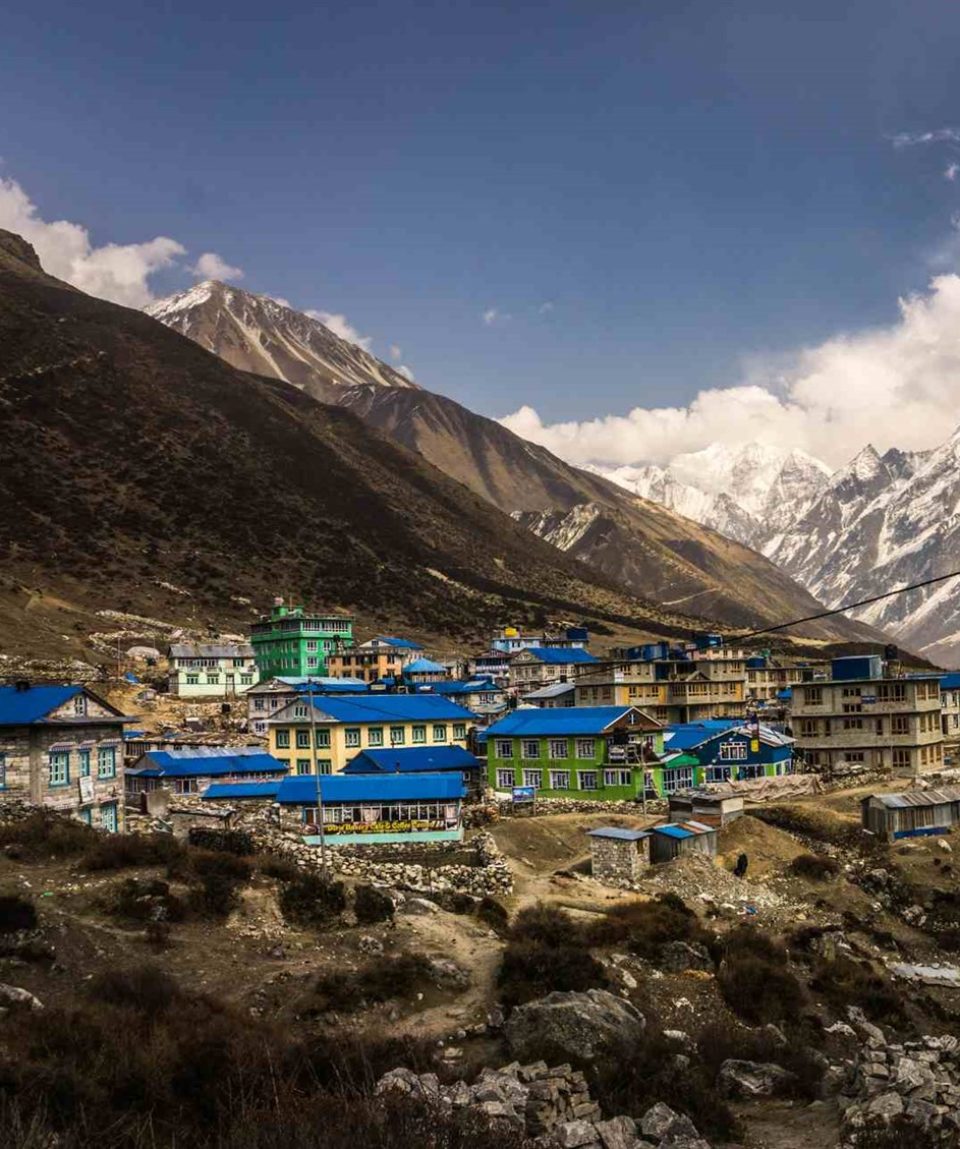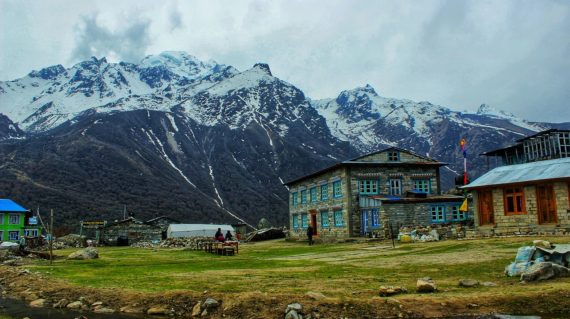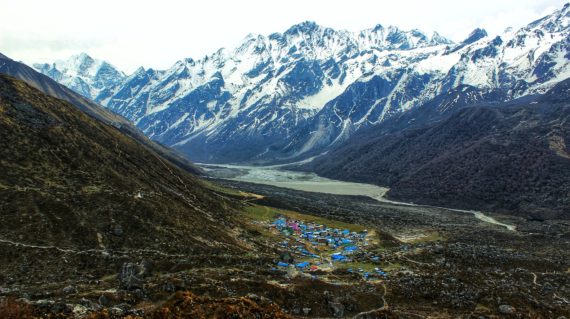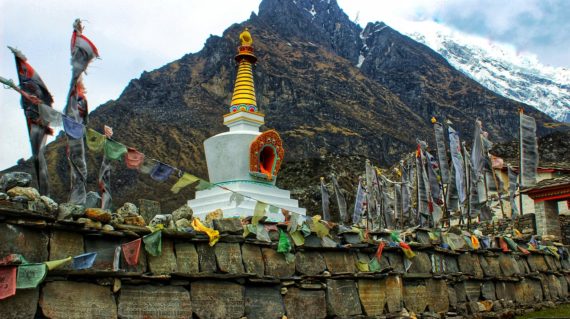
Langtang Trek: Explore Nepal’s Pristine Wilderness
fromClose to Kathmandu, Nepal’s Langtang Trek offers the chance to go on a real trekking trip. You can enjoy the finest of what the Himalayas have to offer in around 12 days. Some claim that the Langtang National Park feels even more isolated than the Annapurna Circuit Trek or the trek to Everest Base Camp. For those who wish to see something unadulterated without having to travel further, there is the Langtang Trek.
The Langtang Trek takes place in a section of Nepal’s Bagmati province’s northern central Himalayas. The area, known as Langtang National Park, is located 51 kilometers north of the Kathmandu Valley and eventually forms the border with China’s Tibetan Autonomous Region. The park is home to about 4,500 people. Subtropical to alpine climate zones are all represented in the Langtang National Park. The park’s forest covers about 25% of its area. Among the trees are rhododendron species, evergreen pine, deciduous oak and maple, and several others. The Himalayan black bear, the Himalayan tahr, which resembles a goat, the Assam macaque, and red pandas are examples of wildlife.
The stunning Langtang valley was the third most visited of Nepal’s major trekking regions, after Solu Khumbu and the Annapurna region, for many hikers, and Langtang hiking was at the top of many bucket lists for many years. However, Langtang has recently gained notoriety for another reason: the 2015 earthquake that decimated the region’s most significant village. Something awful occurred over the village of Langtang, where numerous villages in Nepal sustained significant damage. A massive, catastrophic avalanche of ice and boulders was caused when a portion of Langtang Lirung’s lofty peak broke off.
You bypass the crowded paths and teahouses of the Annapurna and Khumbu when you go Langtang Trekking. People in Langtang appreciate that hikers have rediscovered the routes. Consequently, you will receive a warm welcome throughout a Langtang Valley Trek. Likewise, the Tibetan Buddhist culture and Tamang culture will amaze you with their rich traditions and welcoming nature.
-
Reviews 0 Reviews0/5
-
Vacation Style Holiday Type
-
Activity Level Challenging
-
Group Size Small Group
Trekking Highlights:
- A road tour through the majestic river of Trisuli
- Discover the Langtang Valley – the ‘valley of glaciers’
- Climb Tserko Ri and witness the stunning scenic views
- Experience the view of snow-capped mountains such as Langtang Ri, Langtang, Langsisa, and Ganjala Peak
- Get close to the Tibetan Buddhist culture and lifestyle
- Blossom beautifully like rhododendron in the rhododendron forests
- Visit old Buddhist shrines such as Langtang Gompa and Kyanjing Gompa and feel the divinity of the monks there
Why Trek with us?
Quality:
For us, quality includes both luxury and a feeling of community. We warrant the following link. The Langtang Journey has been planned so that we may create memories with the locals and ourselves in addition to hiking the trek. We’ll socialize, take photos, eat together, and settle in.
The tales of the locals who have assimilated into the Tibetan Buddhist way of life, the sincerity of the monks at the monasteries, and the innocence of the children playing in the chilly streets will lift our spirits more than the trekking we’ll be doing our hike.
Giving back to the community:
The Nepalese communities that contribute directly or indirectly to the trekking sector in this nation blessed with exceptional mountains gave birth to Elite Explorer. We are explorers, not simply trekkers, and we want to contribute in some way to the towns, villages, and routes we pass on our adventure through the Langtang Trek, even if it’s just a small amount.
We will assist in cleaning the area around Langtang Village, provide some first aid kits to the local clinics, school children there will receive stationery and books, and villagers along the route will receive meals.
Additionally, we will document the unseen stories about the struggles and the rehabilitation of the Langtang village. If we can, we will physically contribute to the restoration efforts; if not, we will utilize the footage to solicit volunteers who are willing to help rebuild the magnificent Langtang hamlet.
- Pick up and transfer to the booked accommodation by Elite Explorer representative from Tribhuwan International Airport Kathmandu. (please look for your full name card outside the arrival hall, +977 985 115 5251 arrival assistance WhatsApp call or message)
- Twin sharing or double bed accommodation with buffet breakfast in Kathmandu.
- Guided, know your surrounding tour in Kathmandu.
- Private vehicle for ground transport from Kathmandu to Syabrubesi.
- Guided trek by our expert and experienced English-speaking trekking guide. (language guide can be arranged based on your preference.)
- A porter to help carry our trekking bags (trekking bags must not exceed 20 kg 2 pax combined )
- Locally available breakfast, lunch, and dinner including tea or coffee.
- Basic Mountain Lodges (famously known as tea houses) for accommodation.
- Guide Porter salary remunerations and insurance
- Trekkers Information Management System (TIMS) card
- Necessary documentation and Langtang trekking permit.
- First aid kit including oxygen meter
- Syabrubesi Kathmandu drive
- Government tax
- Airport transfer upon completion of the program
- Client personal expenses and bar bill including soft drinks
- Natural Calamities beyond our control and expenses incurred in such rescue services.
- Travel/Medical Insurance
- Day 01 Arrival in Kathmandu
- Day 02 Preparation of Trekking and Kathmandu City tour
- Day 03 Drive to Syabrubesi (1450m) by Jeep, 7-8 hours
- Day 04 Syabrubesi Lama Hotel (2480m), 2 hours
- Day 05 Lama Hotel to Langtang Village (3540m), 3-4 hours
- Day 06 Langtang village- Kyanjin Gompa (3817m), 2-3 hours
- Day 07 Acclimatization at Kyanjin; Climb to Tserko Ri (4850m), 2 hours
- Day 08 Kyanjin to Lama Hotel (2480m), 5-7 hours
- Day 09 Lama Hotel to Syabrubesi (1450m), 4-5 hours
- Day 10 Syabrubesi to Kathmandu, 8 hours
- Day 11 Kathmandu free day
- Day 12 Departure
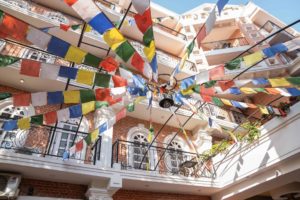

How many hours do we trek each day?
We will trek for six hours on average, but depending on the region you trek in, you might go for nine hours straight, including breaks for meals.
What transportation will it be to the trekking starting point?
Depending on the trekking region, either private transportation or air travel will be used.
Can I leave the things behind before heading for trekking?
Yes, we’ll tag your bag and keep it at your accommodation until you get back. Likewise, you should travel as lightly as possible when trekking.
Is it very cold in Kathmandu on my arrival?
There are four seasons and 300 days of sunshine in Nepal. As a result, Kathmandu’s lowest recorded temperature is -3 degrees Celsius, or 26.6 degrees Fahrenheit. However, while trekking, the temperature may drop to -13 degrees Fahrenheit or -25 degrees Celsius. For more details on what to pack and bring please contact your dedicated travel consultant or you can also contact us via E-mail.
Do I need to be extra careful of altitude sickness?
Our itineraries are made to give you plenty of time for acclimatization, reducing the likelihood that you will have altitude sickness. Every evening before or after dinner, our extremely knowledgeable guide will give us a briefing for the following day’s trekking, including instructions to prevent altitude sickness over 3500 meters. You must notify our guide right away if you have shortness of breath, headache, exhaustion, nausea, vomiting, a rapid heartbeat, or insomnia since altitude sickness can be fatal.
How many kg of bag pack am I allowed to carry?
The greatest option is usually to trek light. The best-recommended backpack weight is 10 kg for trekking bags and 5 kg for carry-on luggage because one must also include basics. (It also serves as the flight to Lukla’s weight restriction.)
Will there be a porter to carry my bag pack apart from the guide?
Yes, a porter will assist you in carrying the trekking backpack packs.
Can you tell me about the food in the mountains?
Most of the food is freshly prepared, but meats may have been stored for a while. Freshly prepared Daal and Bhat, a staple of traditional Nepali cuisine, are the finest.
How basic are tea houses, can I shower every day?
A basic bed, private or shared bathrooms, cold water in the absence of electricity or sunlight, charging the wifi battery, and the absence of a room heater. This is how simple tea houses seem. Further, during the cold winter, the water freezes in the pipe leaving no running water.As mentioned earlier, having a hot shower (or bucket full of hot water) is feasible in most tea houses, however, if unfavorable circumstances like an electricity cut-off occur, you may have to wait to take a hot shower.
Is there wifi or cellular signals in the mountains?
In the tea houses along the trails, there is wifi, however, the signal strength and speed may not be as advertised. On request, Team Elite Explorer will provide you with a local sim card for data subscription.
How about power, will there be charging points?
There will, in fact, be charging ports. Be considerate when charging your electronics as tea houses provide shelter for other hikers as well.
In case of medical issues, how will I get assistance?
Our guide will evaluate the case according to its seriousness, seek advice from the office as necessary, and then decide on the spot whether to transport the patient to the nearest medical facilities or call for help. When trekking in Nepal, kindly make sure to have comprehensive travel medical insurance.
Can 3 years and 80 plus age trek in the mountains?
Every age group can find the ideal trekking trails in Nepal. So every one of any age can hike in the mountains. When working with infants and the elderly, we take extra precautions both in the planning of the itineraries and on the ground.
Lastly, how fit should I be for trekking?
For the trek, you need to be both physically and mentally prepared. The outcome of your adventure entirely rests on you. We advise selecting the trekking routes based on your degree of fitness. There is little doubt that shorter routes are simpler than longer ones. A higher level of fitness will be needed for the longer treks. So, try to be in top physical shape.
